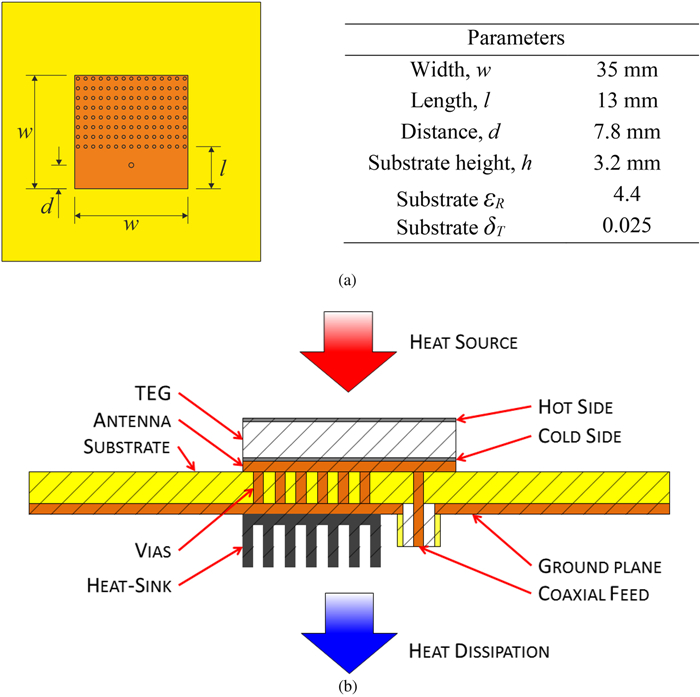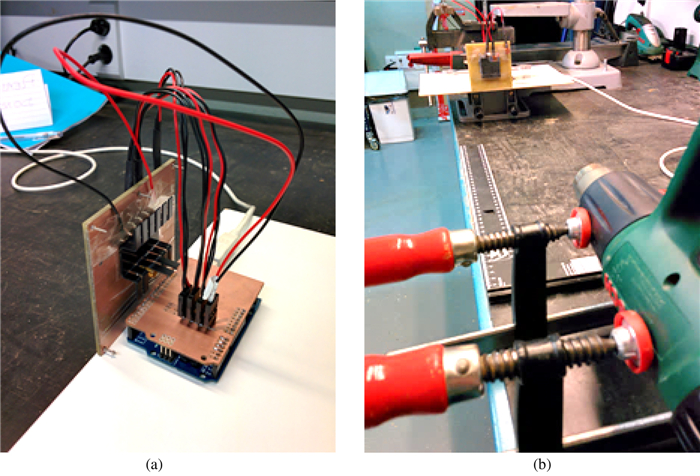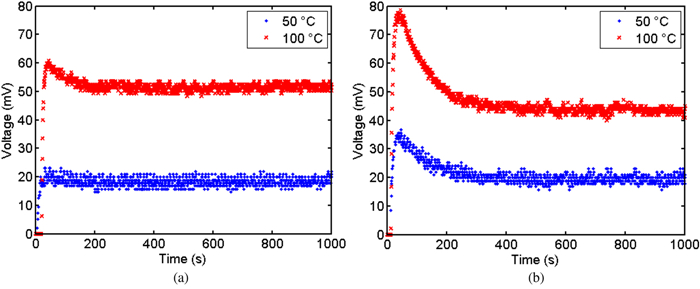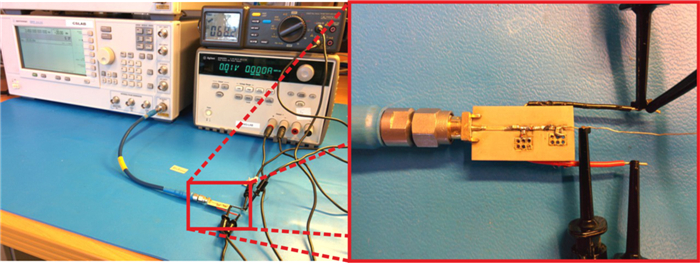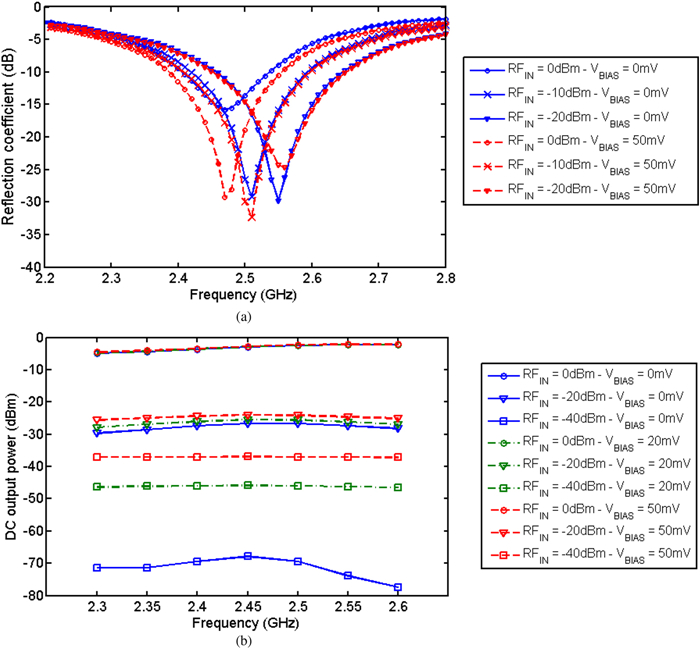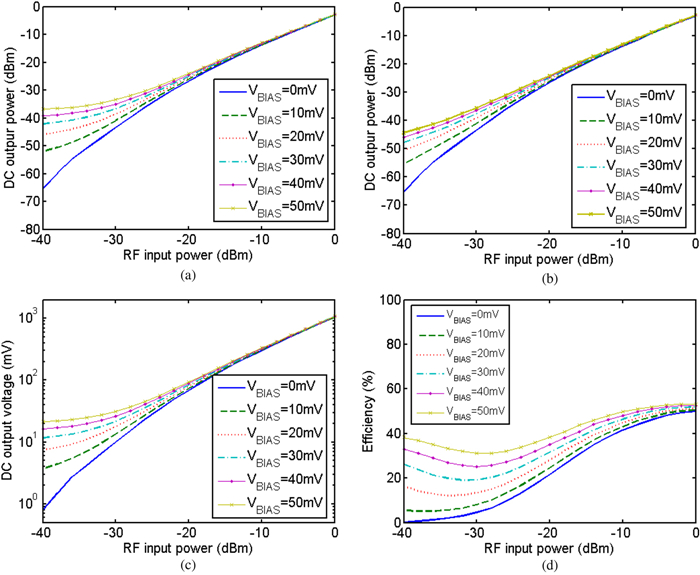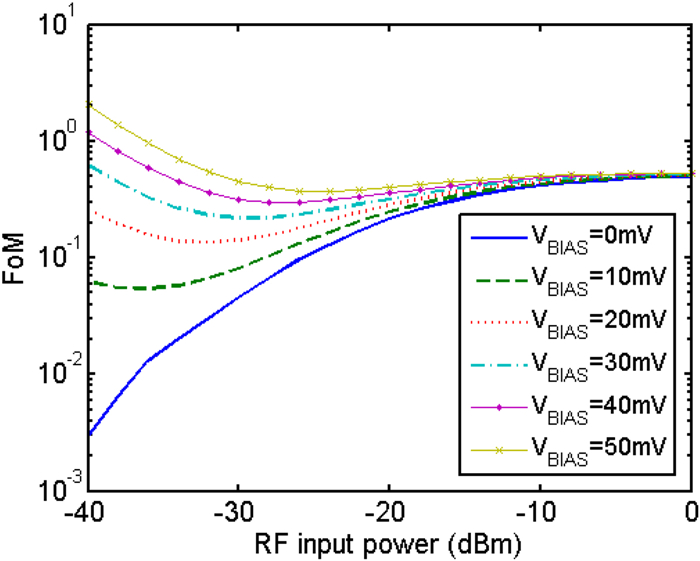Performance improvement of rectifiers for WPT exploiting thermal energy harvesting
-
1.
University of Perugia, Via G. Duranti 93, 06125, Perugia, Italy
-
2.
CTTC, Av. Carl Friedrich Gauss 7, 08860 Castelldefels, Barcelona, Spain
-
3.
Instituto de Telecomunicações, Dep. Electrónica, Telecomunicações e Informática, Universidade de Aveiro, Aveiro, Portugal
More Information
-
Author Bio:
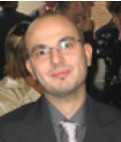 Marco Virili
Marco Virili was born in Terni, Italy, in 1983. He received the Master of Science in Electronic Engineering from the University of Perugia, Italy, in 2009. Since 2010, he has been with the Department of Engineering (DI), University of Perugia, as an RF designer. In 2011 he started the Ph.D. course in Information Engineering with the High Frequency Electronics (HFE) of the same university. In 2013 he spent 1 month in the Department of Information Technology (INTEC) of Ghent University, Belgium, with the COST Short Term Scientific Mission (STSM), working on wearable electronics. In 2014 he joined the Centre Tecnològic de Telecomunicacions de Catalunya (CTTC), Spain, as Ph.D. visiting student for 6 months working on microwave devices for WPT and EH. Since 2014 he is an IEEE Student Member.
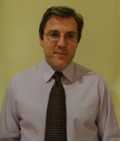 Apostolos Georgiadis
Apostolos Georgiadis was born in Thessaloniki, Greece. He received the Ph.D. degree in Electrical Engineering from the University of Massachusetts at Amherst, in 2002. He is Senior Researcher and Group Leader of the Microwave Systems and Nanotechnology Department at Center Tecnològic de Telecomunicacions de Catalunya (CTTC), Barcelona, Spain. His research interests are energy harvesting and wireless power transfer, RFID technology and active antennas and arrays. He is Member of the IEEE MTT-S TC-24 RFID Technologies (Chair 2012–2014) and of IEEE MTT-S TC-26 Wireless Energy Transfer and Conversion. He is Distinguished Lecturer of IEEE Technical Committee on RFID (IEEE CRFID). He serves as an Associate Editor of the IEEE Microwave and Wireless Components Letters and IET Microwaves Antennas and Propagation Journals. He is Editor-in-Chief of Wireless Power Transfer. He is Vice-Chair of URSI Commission D.
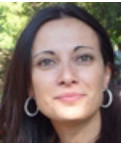 Ana Collado
Ana Collado received the M.Sc. and Ph.D. degrees in Telecommunications Engineering from the University of Cantabria, Spain, in 2002 and 2007, respectively. She is presently a Senior Research Associate and the R & D Management Coordinator at the Technological Telecommunications Center of Catalonia (CTTC), Barcelona, Spain. She has participated in national and international research projects and has co-authored over 70 papers in journals and conferences. She has collaborated in the organization of international workshops and training schools for Ph.D. students in different countries of the European Union. She was a Marie Curie Fellow of the FP7 project Symbiotic Wireless Autonomous Powered System (SWAP). She serves in the Editorial Board of the Radioengineering Journal and of the Cambridge Wireless Power Transfer and she is presently an Associate Editor of the IEEE Microwave Magazine and a member of the IEEE MTT-26 Wireless Energy Transfer and Conversion and MTT-24 RFID Technologies.
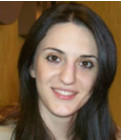 Kyriaki Niotaki
Kyriaki Niotaki was born in Crete, Greece. She received the B.S. in Informatics and the M.S. in Electronic Physics with specialization at Electronic Telecommunication Technology, both from Aristotle University of Thessaloniki (Greece), in 2009 and 2011, respectively. Since December 2011, she has been with the Center Tecnologic de Telecomunicacions de Catalunya (CTTC), Barcelona, Spain, as a Research Assistant. Presently, she is working towards her Ph.D. in the Signal Theory and Communications Department of the Technical University of Catalonia (UPC), Barcelona, Spain. Her main research interests include energy harvesting solutions and the design of power amplifiers. In 2014, she was the recipient of an IEEE Microwave Theory and Techniques Society (IEEE MTT-S) Graduate Fellowship Award.
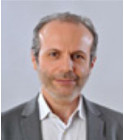 Paolo Mezzanotte
Paolo Mezzanotte was born in Perugia, Italy, in 1965. He received the Ph.D. degree from the University of Perugia, Italy, in 1997. Since January 2007, he is Associate Professor with the same University, teaching the classes of Radiofrequency Engineering. His research activities concern numerical methods and CAD techniques for passive microwave structures and the analysis and design of microwave and millimeter-wave circuits. More recently his research interests were mainly focused on the study of advanced technologies such as LTCC, RF- MEMS, and microwave circuits printed on green substrates. These research activities are testified by more than 100 publications in the most important specialized journals and at the main conferences of the microwave scientific community. The present H-index of Paolo Mezzanotte (ISI journals) is equal to 13.
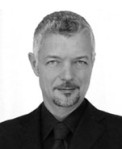 Luca Roselli
Luca Roselli (M92 SM01), MG in 1988. In 1991 he joined the University of Perugia, where he is presently teaching Applied Electronics and coordinating the HFE-Lab as Associate Professor. In 2000 he founded the spin-off WiS Srl. From 2008 to 2012 he was member of the BoD of ARTsrl. He organized the Ⅶ CEM-TD-2007 and the first IEEE-WPTC-2013. He is member: of the list of experts of Italian Ministry of Reserach, of the IEEE Technical Committees MTT-24 (past chair), -25 and -26; of the ERC Panel PE7, of the AC of IEEE-WPTC and chairman of the SC-32 of IMS. He is involved in the boards of several International Conferences and he is reviewer for many international reviews (including IEEE-Proceedings, -MTT and -MWCL). His research interest is HF electronic systems, with special attention to RFID-NFC, new materials and WPT. He published more than 220 contributions (HFi 21, about 1550 citations – Scholar).
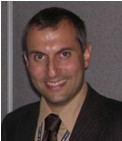 Federico Alimenti
Federico Alimenti received the Laurea and the Ph.D. degrees from the University of Perugia, Italy, in 1993 and 1997, respectively, both in Electronic Engineering. In 1996 he was recipient of the URSI Young Scientist Award and Visiting Scientist at the Technical University of Munich, Germany. Since 2001 he has been with the Department of Engineering at the University of Perugia teaching the class of Microwave Electronic. Between 2011 and 2014 he was the scientific coordinator of the ENIAC ARTEMOS project. In 2013 he was the recipient of the IET Premium (Best Paper) Award and the TPC Chair of the IEEE Wireless Power Transfer Conference. In the summer 2014 he was Visiting Professor at EPFL, Switzerland. His interests are about microwave circuit design. He has authored a European Patent and more than 150 papers in journals and conferences. He (H-index equal to 11, Scopus) is Senior IEEE Member.
 Nuno Borges Carvalho
Nuno Borges Carvalho received the Diploma and Doctoral degrees in Electronics and Telecommunications Engineering from the University of Aveiro, Portugal, in 1995 and 2000, respectively. He is presently a Full Professor and a Senior Research Scientist with the Institute of Telecommunications, University of Aveiro. He coauthored Intermodulation in Microwave and Wireless Circuits (Artech House, 2003), Microwave and Wireless Measurement Techniques and White Space Communication Technologies (Cambridge University Press, 2013 and 2014). He has been a reviewer and author of over 200 papers in magazines and conferences. He is associate editor of the IEEE Transactions on Microwave Theory and Techniques, IEEE Microwave Magazine, and Cambridge Wireless Power Transfer Journal. He is the co-inventor of four patents. His main research interests include SDR, WPT, nonlinear distortion analysis in microwave/wireless circuits and systems, and measurement of nonlinear phenomena. He has recently been involved in the design of dedicated radios and systems for newly emerging wireless technologies
-
Corresponding author:
M. Virili Email: marco.virili.1983@ieee.org
-
Abstract
This paper proposes a combined harvesting system to improve the efficiency and flexibility of autonomous wireless network nodes, supplied by means of wireless power transfer technique. In particular, a mixed system for electromagnetic (EM) and thermal energy harvesting (EH), conceived for passive nodes of wireless sensor networks and radio frequency (RF) identification tags, is described. The proposed system aims at increasing the effectiveness and the efficiency of the EH system by integrating an antenna and a rectifier with a thermo-electric generator (TEG) able to perform thermal EH. The energy provided by the thermal harvester is exploited twice: to increase the rectifier efficiency by providing a voltage usable to improve the bias condition of the rectifying diode, and to provide additional dc energy, harvested for free. Ultimately, a great efficiency improvement, especially at low incident RF power, has been observed. The design methodology and the EM performance of a quarter-wavelength patch antenna, integrated with the TEG are resumed. Then, a test campaign to evaluate the thermal EH performance has been carried out. Afterward, a rectifier with variable bias voltage, operating at the same frequency of the antenna, has been opportunely designed to exploit the harvested thermal energy to bias the diode. A measurement campaign has been then carried out to test the efficiency increment obtained and to validate the proposed solution.
-
About this article
Cite this article
Virili M, Georgiadis A, Collado A, Niotaki K, Mezzanotte P, et al. 2015. Performance improvement of rectifiers for WPT exploiting thermal energy harvesting. Wireless Power Transfer 2(1): 22-31 doi: 10.1017/wpt.2015.4
|
Virili M, Georgiadis A, Collado A, Niotaki K, Mezzanotte P, et al. 2015. Performance improvement of rectifiers for WPT exploiting thermal energy harvesting. Wireless Power Transfer 2(1): 22-31 doi: 10.1017/wpt.2015.4
|









 Marco Virili was born in Terni, Italy, in 1983. He received the Master of Science in Electronic Engineering from the University of Perugia, Italy, in 2009. Since 2010, he has been with the Department of Engineering (DI), University of Perugia, as an RF designer. In 2011 he started the Ph.D. course in Information Engineering with the High Frequency Electronics (HFE) of the same university. In 2013 he spent 1 month in the Department of Information Technology (INTEC) of Ghent University, Belgium, with the COST Short Term Scientific Mission (STSM), working on wearable electronics. In 2014 he joined the Centre Tecnològic de Telecomunicacions de Catalunya (CTTC), Spain, as Ph.D. visiting student for 6 months working on microwave devices for WPT and EH. Since 2014 he is an IEEE Student Member.
Marco Virili was born in Terni, Italy, in 1983. He received the Master of Science in Electronic Engineering from the University of Perugia, Italy, in 2009. Since 2010, he has been with the Department of Engineering (DI), University of Perugia, as an RF designer. In 2011 he started the Ph.D. course in Information Engineering with the High Frequency Electronics (HFE) of the same university. In 2013 he spent 1 month in the Department of Information Technology (INTEC) of Ghent University, Belgium, with the COST Short Term Scientific Mission (STSM), working on wearable electronics. In 2014 he joined the Centre Tecnològic de Telecomunicacions de Catalunya (CTTC), Spain, as Ph.D. visiting student for 6 months working on microwave devices for WPT and EH. Since 2014 he is an IEEE Student Member.  Apostolos Georgiadis was born in Thessaloniki, Greece. He received the Ph.D. degree in Electrical Engineering from the University of Massachusetts at Amherst, in 2002. He is Senior Researcher and Group Leader of the Microwave Systems and Nanotechnology Department at Center Tecnològic de Telecomunicacions de Catalunya (CTTC), Barcelona, Spain. His research interests are energy harvesting and wireless power transfer, RFID technology and active antennas and arrays. He is Member of the IEEE MTT-S TC-24 RFID Technologies (Chair 2012–2014) and of IEEE MTT-S TC-26 Wireless Energy Transfer and Conversion. He is Distinguished Lecturer of IEEE Technical Committee on RFID (IEEE CRFID). He serves as an Associate Editor of the IEEE Microwave and Wireless Components Letters and IET Microwaves Antennas and Propagation Journals. He is Editor-in-Chief of Wireless Power Transfer. He is Vice-Chair of URSI Commission D.
Apostolos Georgiadis was born in Thessaloniki, Greece. He received the Ph.D. degree in Electrical Engineering from the University of Massachusetts at Amherst, in 2002. He is Senior Researcher and Group Leader of the Microwave Systems and Nanotechnology Department at Center Tecnològic de Telecomunicacions de Catalunya (CTTC), Barcelona, Spain. His research interests are energy harvesting and wireless power transfer, RFID technology and active antennas and arrays. He is Member of the IEEE MTT-S TC-24 RFID Technologies (Chair 2012–2014) and of IEEE MTT-S TC-26 Wireless Energy Transfer and Conversion. He is Distinguished Lecturer of IEEE Technical Committee on RFID (IEEE CRFID). He serves as an Associate Editor of the IEEE Microwave and Wireless Components Letters and IET Microwaves Antennas and Propagation Journals. He is Editor-in-Chief of Wireless Power Transfer. He is Vice-Chair of URSI Commission D.  Ana Collado received the M.Sc. and Ph.D. degrees in Telecommunications Engineering from the University of Cantabria, Spain, in 2002 and 2007, respectively. She is presently a Senior Research Associate and the R & D Management Coordinator at the Technological Telecommunications Center of Catalonia (CTTC), Barcelona, Spain. She has participated in national and international research projects and has co-authored over 70 papers in journals and conferences. She has collaborated in the organization of international workshops and training schools for Ph.D. students in different countries of the European Union. She was a Marie Curie Fellow of the FP7 project Symbiotic Wireless Autonomous Powered System (SWAP). She serves in the Editorial Board of the Radioengineering Journal and of the Cambridge Wireless Power Transfer and she is presently an Associate Editor of the IEEE Microwave Magazine and a member of the IEEE MTT-26 Wireless Energy Transfer and Conversion and MTT-24 RFID Technologies.
Ana Collado received the M.Sc. and Ph.D. degrees in Telecommunications Engineering from the University of Cantabria, Spain, in 2002 and 2007, respectively. She is presently a Senior Research Associate and the R & D Management Coordinator at the Technological Telecommunications Center of Catalonia (CTTC), Barcelona, Spain. She has participated in national and international research projects and has co-authored over 70 papers in journals and conferences. She has collaborated in the organization of international workshops and training schools for Ph.D. students in different countries of the European Union. She was a Marie Curie Fellow of the FP7 project Symbiotic Wireless Autonomous Powered System (SWAP). She serves in the Editorial Board of the Radioengineering Journal and of the Cambridge Wireless Power Transfer and she is presently an Associate Editor of the IEEE Microwave Magazine and a member of the IEEE MTT-26 Wireless Energy Transfer and Conversion and MTT-24 RFID Technologies.  Kyriaki Niotaki was born in Crete, Greece. She received the B.S. in Informatics and the M.S. in Electronic Physics with specialization at Electronic Telecommunication Technology, both from Aristotle University of Thessaloniki (Greece), in 2009 and 2011, respectively. Since December 2011, she has been with the Center Tecnologic de Telecomunicacions de Catalunya (CTTC), Barcelona, Spain, as a Research Assistant. Presently, she is working towards her Ph.D. in the Signal Theory and Communications Department of the Technical University of Catalonia (UPC), Barcelona, Spain. Her main research interests include energy harvesting solutions and the design of power amplifiers. In 2014, she was the recipient of an IEEE Microwave Theory and Techniques Society (IEEE MTT-S) Graduate Fellowship Award.
Kyriaki Niotaki was born in Crete, Greece. She received the B.S. in Informatics and the M.S. in Electronic Physics with specialization at Electronic Telecommunication Technology, both from Aristotle University of Thessaloniki (Greece), in 2009 and 2011, respectively. Since December 2011, she has been with the Center Tecnologic de Telecomunicacions de Catalunya (CTTC), Barcelona, Spain, as a Research Assistant. Presently, she is working towards her Ph.D. in the Signal Theory and Communications Department of the Technical University of Catalonia (UPC), Barcelona, Spain. Her main research interests include energy harvesting solutions and the design of power amplifiers. In 2014, she was the recipient of an IEEE Microwave Theory and Techniques Society (IEEE MTT-S) Graduate Fellowship Award.  Paolo Mezzanotte was born in Perugia, Italy, in 1965. He received the Ph.D. degree from the University of Perugia, Italy, in 1997. Since January 2007, he is Associate Professor with the same University, teaching the classes of Radiofrequency Engineering. His research activities concern numerical methods and CAD techniques for passive microwave structures and the analysis and design of microwave and millimeter-wave circuits. More recently his research interests were mainly focused on the study of advanced technologies such as LTCC, RF- MEMS, and microwave circuits printed on green substrates. These research activities are testified by more than 100 publications in the most important specialized journals and at the main conferences of the microwave scientific community. The present H-index of Paolo Mezzanotte (ISI journals) is equal to 13.
Paolo Mezzanotte was born in Perugia, Italy, in 1965. He received the Ph.D. degree from the University of Perugia, Italy, in 1997. Since January 2007, he is Associate Professor with the same University, teaching the classes of Radiofrequency Engineering. His research activities concern numerical methods and CAD techniques for passive microwave structures and the analysis and design of microwave and millimeter-wave circuits. More recently his research interests were mainly focused on the study of advanced technologies such as LTCC, RF- MEMS, and microwave circuits printed on green substrates. These research activities are testified by more than 100 publications in the most important specialized journals and at the main conferences of the microwave scientific community. The present H-index of Paolo Mezzanotte (ISI journals) is equal to 13.  Luca Roselli (M92 SM01), MG in 1988. In 1991 he joined the University of Perugia, where he is presently teaching Applied Electronics and coordinating the HFE-Lab as Associate Professor. In 2000 he founded the spin-off WiS Srl. From 2008 to 2012 he was member of the BoD of ARTsrl. He organized the Ⅶ CEM-TD-2007 and the first IEEE-WPTC-2013. He is member: of the list of experts of Italian Ministry of Reserach, of the IEEE Technical Committees MTT-24 (past chair), -25 and -26; of the ERC Panel PE7, of the AC of IEEE-WPTC and chairman of the SC-32 of IMS. He is involved in the boards of several International Conferences and he is reviewer for many international reviews (including IEEE-Proceedings, -MTT and -MWCL). His research interest is HF electronic systems, with special attention to RFID-NFC, new materials and WPT. He published more than 220 contributions (HFi 21, about 1550 citations – Scholar).
Luca Roselli (M92 SM01), MG in 1988. In 1991 he joined the University of Perugia, where he is presently teaching Applied Electronics and coordinating the HFE-Lab as Associate Professor. In 2000 he founded the spin-off WiS Srl. From 2008 to 2012 he was member of the BoD of ARTsrl. He organized the Ⅶ CEM-TD-2007 and the first IEEE-WPTC-2013. He is member: of the list of experts of Italian Ministry of Reserach, of the IEEE Technical Committees MTT-24 (past chair), -25 and -26; of the ERC Panel PE7, of the AC of IEEE-WPTC and chairman of the SC-32 of IMS. He is involved in the boards of several International Conferences and he is reviewer for many international reviews (including IEEE-Proceedings, -MTT and -MWCL). His research interest is HF electronic systems, with special attention to RFID-NFC, new materials and WPT. He published more than 220 contributions (HFi 21, about 1550 citations – Scholar).  Federico Alimenti received the Laurea and the Ph.D. degrees from the University of Perugia, Italy, in 1993 and 1997, respectively, both in Electronic Engineering. In 1996 he was recipient of the URSI Young Scientist Award and Visiting Scientist at the Technical University of Munich, Germany. Since 2001 he has been with the Department of Engineering at the University of Perugia teaching the class of Microwave Electronic. Between 2011 and 2014 he was the scientific coordinator of the ENIAC ARTEMOS project. In 2013 he was the recipient of the IET Premium (Best Paper) Award and the TPC Chair of the IEEE Wireless Power Transfer Conference. In the summer 2014 he was Visiting Professor at EPFL, Switzerland. His interests are about microwave circuit design. He has authored a European Patent and more than 150 papers in journals and conferences. He (H-index equal to 11, Scopus) is Senior IEEE Member.
Federico Alimenti received the Laurea and the Ph.D. degrees from the University of Perugia, Italy, in 1993 and 1997, respectively, both in Electronic Engineering. In 1996 he was recipient of the URSI Young Scientist Award and Visiting Scientist at the Technical University of Munich, Germany. Since 2001 he has been with the Department of Engineering at the University of Perugia teaching the class of Microwave Electronic. Between 2011 and 2014 he was the scientific coordinator of the ENIAC ARTEMOS project. In 2013 he was the recipient of the IET Premium (Best Paper) Award and the TPC Chair of the IEEE Wireless Power Transfer Conference. In the summer 2014 he was Visiting Professor at EPFL, Switzerland. His interests are about microwave circuit design. He has authored a European Patent and more than 150 papers in journals and conferences. He (H-index equal to 11, Scopus) is Senior IEEE Member.  Nuno Borges Carvalho received the Diploma and Doctoral degrees in Electronics and Telecommunications Engineering from the University of Aveiro, Portugal, in 1995 and 2000, respectively. He is presently a Full Professor and a Senior Research Scientist with the Institute of Telecommunications, University of Aveiro. He coauthored Intermodulation in Microwave and Wireless Circuits (Artech House, 2003), Microwave and Wireless Measurement Techniques and White Space Communication Technologies (Cambridge University Press, 2013 and 2014). He has been a reviewer and author of over 200 papers in magazines and conferences. He is associate editor of the IEEE Transactions on Microwave Theory and Techniques, IEEE Microwave Magazine, and Cambridge Wireless Power Transfer Journal. He is the co-inventor of four patents. His main research interests include SDR, WPT, nonlinear distortion analysis in microwave/wireless circuits and systems, and measurement of nonlinear phenomena. He has recently been involved in the design of dedicated radios and systems for newly emerging wireless technologies
Nuno Borges Carvalho received the Diploma and Doctoral degrees in Electronics and Telecommunications Engineering from the University of Aveiro, Portugal, in 1995 and 2000, respectively. He is presently a Full Professor and a Senior Research Scientist with the Institute of Telecommunications, University of Aveiro. He coauthored Intermodulation in Microwave and Wireless Circuits (Artech House, 2003), Microwave and Wireless Measurement Techniques and White Space Communication Technologies (Cambridge University Press, 2013 and 2014). He has been a reviewer and author of over 200 papers in magazines and conferences. He is associate editor of the IEEE Transactions on Microwave Theory and Techniques, IEEE Microwave Magazine, and Cambridge Wireless Power Transfer Journal. He is the co-inventor of four patents. His main research interests include SDR, WPT, nonlinear distortion analysis in microwave/wireless circuits and systems, and measurement of nonlinear phenomena. He has recently been involved in the design of dedicated radios and systems for newly emerging wireless technologies 


